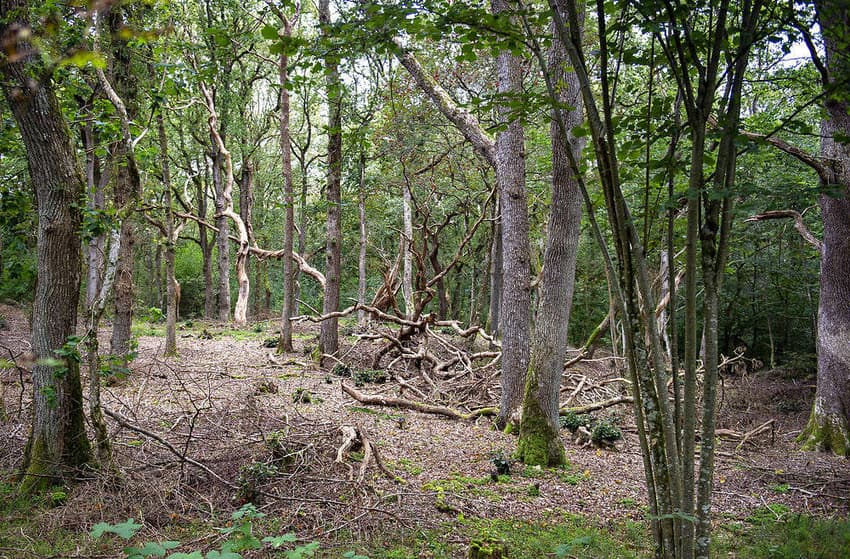Why 30 percent of Denmark could be left to nature

A Danish environmental organization has received a positive political response over a proposal to ensure 30 percent of Denmark be reserved for nature.
The Danish Society for Nature Conservation (Danmarks Naturfredningsforening, DN) wants the country’s nature to be written into law by way of an obligation to ensure 30 percent of Danish land to be nature reserve by 2031, DR reports.
The proposal was made as government politicians met at Marienborg, the official residence of the prime minister, on Monday for talks on biodiversity.
The concept of such a ‘biodiversity law’, which would place binding targets for Denmark on the area, was initially positively received.
The interest organization for the agriculture sector, the Danish Agriculture & Food Council, has said it also supports biodiversity goals, while environment minister Lea Wermelin said she would listen to suggestions regarding both targets and legislation.
“Fundamentally, the biggest task right now is to reverse nature’s decline and ensure that over 2,000 species threatened by extinction get a helping hand and the chance to remain in Denmark,” DN president Maria Reumert Gjerding said to DR.
“So it’s crucial that politicians make commitments to nature targets,” she added.
The Marienborg meeting is the beginning of government work to implement a ‘package’ of laws on nature and biodiversity, which the Social Democratic government promised prior to the June general election.
Wermelin said action must be taken to prevent Denmark from entering a “natural crisis”.
“We are genuinely interested in a new process to form a long-term plan for Denmark’s nature. Although reports paint a bleak picture, they also say it’s possible to set a new, green direction,” she added.
The minister welcomed “specific ideas and wishes” from environmental organizations that could help in making such a plan, DR reports.
Although only 0.4 percent of the area of Denmark is currently wild nature, DN says the target could be reached by buying or renting land from landowners and leaving it to nature, as well as by ensuring a specified amount of agricultural land actively benefits biodiversity.
READ ALSO: Here are Denmark's 15 most beautiful natural areas
Comments
See Also
The Danish Society for Nature Conservation (Danmarks Naturfredningsforening, DN) wants the country’s nature to be written into law by way of an obligation to ensure 30 percent of Danish land to be nature reserve by 2031, DR reports.
The proposal was made as government politicians met at Marienborg, the official residence of the prime minister, on Monday for talks on biodiversity.
The concept of such a ‘biodiversity law’, which would place binding targets for Denmark on the area, was initially positively received.
The interest organization for the agriculture sector, the Danish Agriculture & Food Council, has said it also supports biodiversity goals, while environment minister Lea Wermelin said she would listen to suggestions regarding both targets and legislation.
“Fundamentally, the biggest task right now is to reverse nature’s decline and ensure that over 2,000 species threatened by extinction get a helping hand and the chance to remain in Denmark,” DN president Maria Reumert Gjerding said to DR.
“So it’s crucial that politicians make commitments to nature targets,” she added.
The Marienborg meeting is the beginning of government work to implement a ‘package’ of laws on nature and biodiversity, which the Social Democratic government promised prior to the June general election.
Wermelin said action must be taken to prevent Denmark from entering a “natural crisis”.
“We are genuinely interested in a new process to form a long-term plan for Denmark’s nature. Although reports paint a bleak picture, they also say it’s possible to set a new, green direction,” she added.
The minister welcomed “specific ideas and wishes” from environmental organizations that could help in making such a plan, DR reports.
Although only 0.4 percent of the area of Denmark is currently wild nature, DN says the target could be reached by buying or renting land from landowners and leaving it to nature, as well as by ensuring a specified amount of agricultural land actively benefits biodiversity.
READ ALSO: Here are Denmark's 15 most beautiful natural areas
Join the conversation in our comments section below. Share your own views and experience and if you have a question or suggestion for our journalists then email us at [email protected].
Please keep comments civil, constructive and on topic – and make sure to read our terms of use before getting involved.
Please log in here to leave a comment.